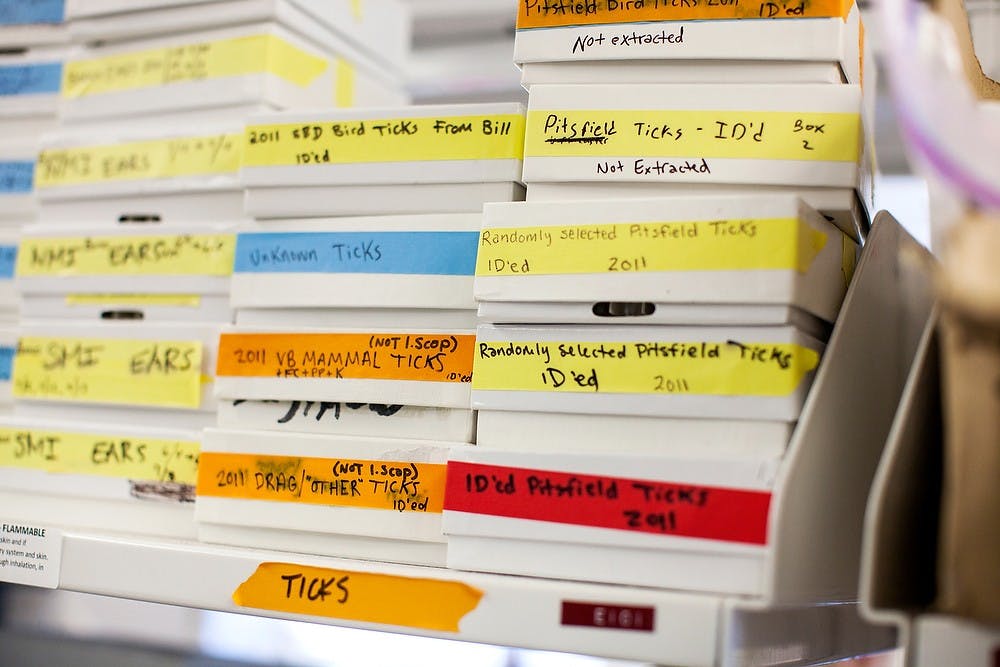Department of fisheries and wildlife associate professor Dr. Jean Tsao has been on a hunt for years, but she’s not hunting for animals — she’s hunting for Lyme disease.
Lyme disease is caused by a bacterium called Borrelia burgdorferi, which is transmitted in the Eastern United States by the blacklegged tick. Tsao said the disease is a growing problem.
“In Michigan, the number of new cases each year in the past couple of years has been increasing,” Tsao said. “Last year it was at 180 cases out of the whole population of Michigan.”
Tsao was interested in studying ecology as an undergraduate student in the early 1990s. During that time, scientists were recognizing ecology as an important player in the understanding of the outbreaks of many diseases affecting humans, including AIDS, hantavirus and Lyme disease.
“I decided I’d like to work on Lyme disease because it involved this tick, lots of different wildlife species, it could help people and it’s some disease that could be studied right here in the U.S.,” Tsao said.
Although Tsao runs a laboratory on campus that is dedicated to the processing of samples, much of her team’s work consists of specimen collection across the state. Her team obtains their samples by trapping animals that carry the pathogen and by systematically dragging cloth across forest undergrowth to collect disease-carrying ticks.
“We go through a process where we extract the DNA. We want to know if these samples are infected, and we do that by looking for the DNA of the Lyme disease pathogen,” Tsao said.
With the data, the team answers questions about tick survivorship, host seeking behavior and the distribution of Lyme disease.
“If we can understand (these questions) better, we might be able to help improve the public’s risk and reducing the risk of Lyme disease,” Tsao said. “There is no vaccine for Lyme disease, so it’s very important, therefore, that we try to understand the environmental aspects, risks and the ecology of Lyme disease so that we can try to reduce Lyme disease risk from the environmental side.”
Tsao believes that collaboration in modern science is imperative, and she encourages students to take up research and hands-on classes in areas that they take interest in.
“A lot of the work that we do in my lab, you have to do collaboratively,” Tsao said. “You need a whole group of people who want to get out there, set traps, and process birds, mammals, lizards, etc., and that’s just a lot more fun with a lot more people.”
Support student media!
Please consider donating to The State News and help fund the future of journalism.
Discussion
Share and discuss “Professor works to prevent diseases through data, research” on social media.







